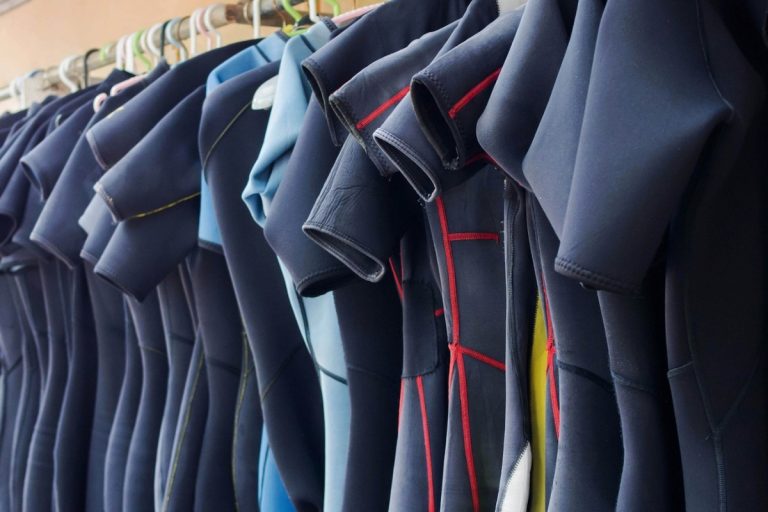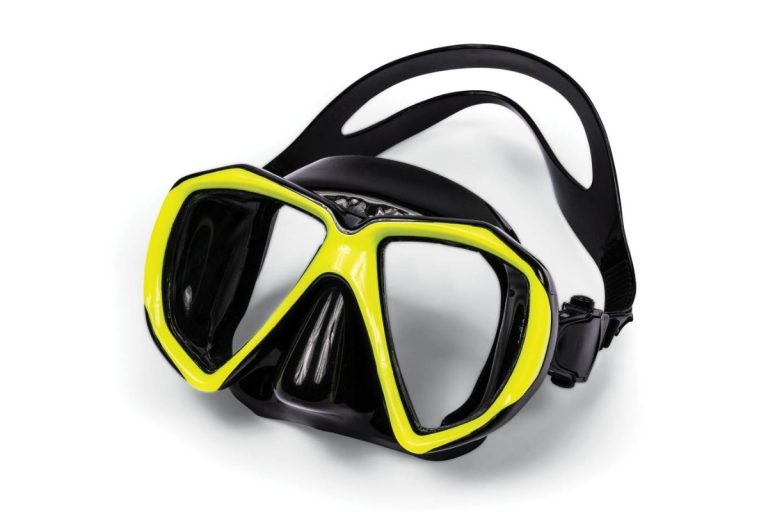Introduction to Women’s and Men’s Cuts
Understanding the fundamental differences between women’s and men’s clothing cuts can transform your wardrobe experience. While many people assume that clothing is simply sized differently between genders, the reality involves complex design considerations that affect everything from comfort to professional appearance. These distinctions go far beyond simple measurements, encompassing body shape accommodations, functional design elements, and aesthetic preferences that have evolved over decades of fashion development.
The clothing industry has long recognized that men and women typically have different body proportions, movement patterns, and style preferences. This recognition has led to specialized cutting techniques, fabric choices, and construction methods that cater to these differences. However, modern fashion trends increasingly blur these traditional lines, creating new opportunities and challenges for consumers seeking the perfect fit.
Whether you’re shopping for work uniforms, casual wear, or formal attire, understanding these differences empowers you to make informed decisions that prioritize both comfort and style. The key lies in recognizing that proper fit isn’t just about looking good—it’s about feeling confident and moving freely throughout your day.
Key Differences in Fit
The most significant variations between women’s and men’s clothing cuts stem from anatomical differences and traditional style preferences. These differences in fit and design affect every aspect of garment construction, from the initial pattern creation to the final finishing touches. Understanding these distinctions helps explain why simply choosing a smaller or larger size across gender lines rarely produces satisfactory results.
Women’s clothing typically accommodates a smaller waist-to-hip ratio, with cuts that emphasize the natural waistline and provide room through the bust and hips. Men’s clothing, conversely, tends to follow straighter lines that accommodate broader shoulders and a more rectangular torso shape. These fundamental differences influence everything from seam placement to dart construction.
Body Shape Variations
Women’s cuts accommodate curves through strategic use of darts, princess seams, and shaped side seams that create a fitted silhouette without restricting movement. The bust area receives special attention with additional ease and specialized construction techniques that prevent pulling or gaping. Hip measurements typically receive more generous allowances compared to the waist, creating the classic hourglass accommodation that defines women’s tailoring.
Men’s cuts focus on accommodating broader shoulders and chest measurements while maintaining a straighter line through the torso. The shoulder line sits differently, often extending slightly beyond the natural shoulder point to create a strong silhouette. Chest measurements are distributed more evenly without the specialized bust accommodations found in women’s garments.
Sleeve Length and Fit
Sleeve construction varies significantly between genders, with women’s sleeves typically cut shorter and with different armhole shapes. Women’s sleeves accommodate narrower shoulders and arms while allowing for the natural arm position when wearing garments over bust curves. The armhole itself sits higher and is often cut smaller to maintain proportion with the overall garment.
Men’s sleeves are cut longer and with larger armholes to accommodate broader shoulders and longer arms. The sleeve attachment point differs, creating a different hang and drape that complements the masculine shoulder line. These differences affect not only appearance but also comfort and range of motion during daily activities.
Pants and Leg Cut Differences
Women’s pants feature a completely different rise and hip accommodation compared to men’s styles. The crotch curve is longer and more pronounced to accommodate wider hips and different body proportions. Waistlines sit at various points depending on the style, but the relationship between waist, hip, and thigh measurements follows different ratios than men’s pants.
Men’s pants typically feature a shorter rise with a straighter cut through the hip and thigh. The crotch curve is shorter and less pronounced, reflecting different anatomical requirements. Leg openings and overall proportions are calculated based on different body measurement relationships, creating distinct silhouettes even in similar styles.
Button Placement and Design
Button placement reflects both practical and aesthetic considerations that differ between genders. Women’s garments traditionally button left over right, a convention that dates back centuries and remains standard today. This placement affects not only the button band construction but also pocket placement and overall garment symmetry.
Men’s garments button right over left, creating different stress points and wear patterns. The button spacing and size selection often differs, with men’s garments typically featuring larger, more widely spaced buttons that complement the overall scale of masculine tailoring.
Tailoring Techniques for Each Gender
Professional tailoring employs different techniques to achieve optimal fit for each gender. Women’s tailoring relies heavily on curved seams, multiple fitting points, and strategic ease placement to accommodate body curves while maintaining a fitted appearance. Bust adjustments, waist suppression, and hip accommodation require specialized skills and techniques.
Men’s tailoring focuses on creating clean lines and proper proportions while accommodating broader frames. Shoulder construction, chest ease, and trouser fitting follow different principles that emphasize structure and classic silhouettes. The approach to alterations and adjustments also differs significantly between genders.
Importance of Proper Fit
Proper fit extends far beyond aesthetic appeal, affecting comfort, safety, and professional presentation in ways that many people don’t fully appreciate. When clothing fits correctly, it moves with your body rather than against it, reducing fatigue and increasing confidence throughout the day. Poor fit can create physical discomfort, restrict movement, and even pose safety risks in certain work environments.
The psychological impact of well-fitting clothes cannot be overstated. When garments fit properly, they enhance your natural silhouette and allow you to move confidently without constantly adjusting or feeling self-conscious. This confidence translates into better performance in professional settings and greater comfort in social situations.
Effects on Comfort and Mobility
Well-fitted clothing allows for natural movement without binding, pulling, or restricting motion. When garments are cut appropriately for your body type, they work with your natural posture and movement patterns rather than fighting against them. This harmony between body and clothing reduces physical stress and fatigue that can accumulate throughout the day.
Poor fit creates pressure points, restricts circulation, and forces your body into unnatural positions to accommodate the garment. Over time, these issues can contribute to physical discomfort and even musculoskeletal problems. Proper fit ensures that clothing supports rather than hinders your daily activities.
Impact on Professional Appearance
In professional settings, clothing fit directly affects how others perceive your competence and attention to detail. Well-fitted garments suggest professionalism, self-awareness, and respect for the workplace environment. They allow you to focus on your work rather than constantly adjusting ill-fitting clothes.
Professional appearance standards often include specific requirements for fit and presentation. Understanding these expectations and choosing appropriately fitted garments helps ensure that your clothing supports rather than detracts from your professional goals. This is particularly important in customer-facing roles or leadership positions.
Potential Safety Risks with Ill-Fitting Clothes
In many work environments, proper clothing fit is a safety requirement rather than just a style preference. Loose sleeves can catch in machinery, while overly tight garments can restrict movement in emergency situations. Safety regulations often specify fit requirements for protective clothing and uniforms.
Ill-fitting shoes pose particular risks, contributing to falls, fatigue, and long-term foot problems. Similarly, improperly fitted safety gear may not provide adequate protection or may create new hazards through poor visibility or restricted movement. Understanding these safety implications helps prioritize proper fit in all clothing choices.
Common Misconceptions
Many people hold misconceptions about clothing fit that can lead to poor purchasing decisions and ongoing comfort issues. These misunderstandings often stem from limited knowledge about garment construction, sizing systems, or the relationship between fit and function. Addressing these misconceptions helps consumers make better choices and achieve greater satisfaction with their clothing purchases.
The fashion industry’s marketing messages sometimes contribute to these misconceptions by oversimplifying complex fit issues or promoting unrealistic expectations. Understanding the reality behind common myths helps consumers navigate these messages more effectively and focus on what truly matters for their individual needs.
Assumptions About Sizes
Size labels provide only a starting point for fit, not a guarantee of proper fit across different brands or styles. Sizing systems vary significantly between manufacturers, and even within the same brand, different styles may fit differently despite carrying the same size label. This variation reflects differences in cut, fabric, and intended fit rather than inconsistent sizing.
Many people assume that knowing their size in one brand translates directly to other brands, leading to disappointment and returns. Successful shopping requires trying on garments or carefully reviewing size charts and return policies when shopping online. Understanding that size is just one factor in achieving proper fit helps set realistic expectations.
Gendered Marketing Myths
Marketing messages often perpetuate myths about what men and women should wear or how clothing should fit. These messages may suggest that certain styles are exclusively masculine or feminine, when in reality, personal preference and body type matter more than gender stereotypes. Modern consumers increasingly reject these artificial limitations.
The rise of gender-neutral and unisex clothing reflects changing attitudes about gendered fashion rules. However, it’s important to understand that unisex doesn’t necessarily mean universally flattering—it often means designed for a middle-ground fit that may not optimize comfort or appearance for any particular body type.
The Unisex Trend and Its Implications
Unisex clothing represents an attempt to create garments that work for multiple body types, but this approach often involves compromises that may not serve anyone particularly well. True unisex design requires careful consideration of diverse body shapes and proportions, not simply creating oversized garments that fit loosely on everyone.
Some unisex designs successfully accommodate diverse body types through clever construction and adjustable features. However, consumers should understand that unisex doesn’t automatically mean better fit—it may mean sacrificing the specialized fit advantages that come with gender-specific design. The key is understanding what compromises you’re willing to make for the benefits of unisex styling.
Specific Clothing Types
Different types of garments present unique fit challenges and considerations that vary between men’s and women’s cuts. Understanding these specific differences helps consumers make informed choices about which styles and cuts will work best for their body type and lifestyle needs. Each garment category has evolved its own conventions and standards that reflect both practical and aesthetic considerations.
Professional clothing, casual wear, and activewear each present different fit priorities and challenges. What works for office attire may not translate to weekend casual wear, and athletic clothing has its own specialized fit requirements that prioritize performance over traditional aesthetic concerns.
Shirts: Men’s vs. Women’s Styles
Women’s shirts accommodate bust curves through strategic dart placement, curved side seams, and specialized ease distribution. The armhole construction differs significantly, sitting higher and smaller to complement narrower shoulders and arms. Button placement, collar sizing, and overall proportions are calculated based on different body measurement relationships.
Men’s shirts feature straighter side seams, larger armholes, and different ease distribution that creates a more structured appearance. The collar construction accommodates broader necks and shoulders, while the overall cut emphasizes clean lines and classic proportions. These fundamental differences explain why simply sizing up or down across gender lines rarely produces satisfactory results.
Pants: Tailored vs. Relaxed Fit
Tailored pants for women feature complex curves and shaping that accommodate hip and thigh proportions while maintaining a sleek appearance. The rise, inseam curve, and waist positioning all differ from men’s pants, creating garments that work with rather than against feminine body shapes. Fit through the seat and thigh requires careful balance between comfort and appearance.
Men’s tailored pants emphasize clean lines and classic proportions while accommodating different body shapes and movement patterns. The construction techniques and fit priorities differ significantly from women’s pants, even when the overall style appears similar. Understanding these differences helps explain why cross-shopping between departments often produces disappointing results.
Outerwear: Differences in Design
Outerwear presents unique challenges because it must fit over other garments while maintaining an attractive silhouette. Women’s coats and jackets accommodate bust curves and provide appropriate ease without creating bulk. The shoulder construction, sleeve attachment, and overall proportions are calculated to work with feminine body shapes and layering needs.
Men’s outerwear emphasizes structure and clean lines while providing adequate room for layering. The shoulder construction creates a strong silhouette, while the overall cut accommodates broader frames without appearing oversized. These design differences affect not only appearance but also functionality and comfort in various weather conditions.
Fabric Choices and Comfort
Fabric selection plays a crucial role in how well garments fit and feel, with different materials offering various benefits for comfort, durability, and appearance. Modern textile technology has created numerous options that can enhance fit and performance, including eco-friendly alternatives that don’t compromise on quality or comfort. Understanding fabric properties helps consumers make informed choices that support their lifestyle needs and values.
The relationship between fabric and fit is complex, with stretch, drape, and recovery properties all affecting how garments conform to the body and maintain their shape over time. Natural fibers offer certain advantages, while synthetic materials may provide performance benefits that natural fibers cannot match.
Breathability and Stretch
Breathable fabrics help regulate body temperature and moisture, contributing to overall comfort throughout the day. Natural fibers like cotton and linen offer excellent breathability, while modern synthetic blends can provide similar benefits with added performance features. The key is finding fabrics that balance breathability with other desired properties like durability and easy care.
Stretch fabrics have revolutionized clothing fit by allowing garments to move with the body while maintaining their shape. However, not all stretch is created equal—some fabrics provide excellent recovery, snapping back to their original shape, while others may stretch out over time. Understanding these differences helps consumers choose fabrics that will maintain their fit and appearance over the long term.
Durability of Fabrics
Fabric durability affects both the longevity of garments and their ability to maintain proper fit over time. High-quality fabrics resist pilling, fading, and shape distortion, ensuring that well-fitted garments continue to look and feel good throughout their lifespan. Investing in durable fabrics often proves more economical in the long run than repeatedly replacing lower-quality items.
Construction quality also affects durability, with proper seaming, interfacing, and finishing techniques contributing to garment longevity. Understanding the relationship between fabric quality and construction helps consumers identify garments that will provide lasting value and consistent fit over time.
Eco-Friendly Options for Both Genders
Sustainable fabric options have expanded dramatically in recent years, offering consumers environmentally responsible choices without sacrificing quality or performance. These eco-friendly alternatives include organic natural fibers, recycled synthetic materials, and innovative new fibers created from renewable resources. Many of these options provide excellent fit and comfort while supporting environmental sustainability goals.
The key to successful eco-friendly fabric choices lies in understanding the performance characteristics of different sustainable materials and matching them to intended use. Some eco-friendly fabrics excel in casual wear applications, while others are better suited to professional or athletic use. Researching these options helps consumers make choices that align with both their fit needs and environmental values.
Care Instructions for Different Cuts
Proper care extends the life of well-fitted garments and helps maintain their shape and appearance over time. Different cuts and construction methods may require specific care approaches to preserve their fit and function. Understanding these requirements helps consumers protect their investment in quality, well-fitted clothing while ensuring continued comfort and appearance.
Care requirements often vary between men’s and women’s garments due to differences in construction, fabric choices, and fit priorities. Following appropriate neoprene care guidelines and general garment care principles helps maintain the specialized features that make these garments fit well and look good.
Washing Techniques
Proper washing techniques preserve fabric integrity and garment shape, ensuring that fitted clothing continues to fit well after repeated cleaning. Different fabrics and construction methods may require specific washing approaches, from gentle hand washing to specialized machine cycles. Understanding these requirements prevents damage that can affect fit and appearance.
Water temperature, detergent choice, and agitation levels all affect how garments respond to washing. Fitted clothing with specialized construction may be particularly sensitive to harsh treatment, requiring extra care to maintain their shape and fit properties. Following manufacturer recommendations and understanding fabric care principles helps ensure long-term satisfaction with well-fitted garments.
Storage Tips for Longevity
Proper storage prevents damage and shape distortion that can affect garment fit over time. Hanging versus folding decisions should be based on garment construction and fabric properties, with structured items generally benefiting from hanging while knits may be better folded. Understanding these principles helps maintain garment shape and fit between wearings.
Climate control and protection from pests, light, and moisture all contribute to garment longevity. Proper storage techniques prevent damage that can affect fit and appearance, ensuring that quality garments continue to serve their owners well over time. Investing in appropriate storage solutions protects the investment in well-fitted clothing.
Repairing Cuts and Tears
Prompt repair of minor damage prevents small problems from becoming major issues that affect garment fit and appearance. Understanding basic repair techniques helps consumers address common problems like loose buttons, small tears, or seam separations before they compromise the garment’s fit or structural integrity.
Professional repair services can address more complex issues while maintaining the specialized construction features that make garments fit well. Knowing when to attempt DIY repairs versus seeking professional help helps ensure that quality garments receive appropriate care and continue to provide good fit and appearance throughout their useful life.
Frequently Asked Questions
What are the main differences between women’s and men’s clothing cuts?
The primary differences stem from anatomical variations, with women’s cuts accommodating curves through darts and shaped seams, while men’s cuts emphasize broader shoulders and a straighter silhouette.
Why is proper fit important?
Proper fit enhances comfort, mobility, and professional appearance, reducing physical discomfort and boosting confidence throughout the day.
What role does fabric choice play in clothing fit?
Fabric selection affects comfort and durability, with properties like breathability and stretch influencing how well garments fit and feel on the body.
How should I care for well-fitted garments?
Proper washing techniques and storage methods are essential to maintain the shape and fit of garments, with specific care requirements varying between men’s and women’s cuts.
What should I consider when shopping for clothing across gender lines?
Understanding that size labels vary between brands and that different cuts are designed for specific body shapes is crucial for finding the right fit.
Embracing Fit for Enhanced Style and Comfort
Recognizing the distinct characteristics of women’s and men’s clothing cuts allows consumers to make informed choices that prioritize both style and comfort. By understanding the importance of fit, fabric, and care, individuals can enhance their wardrobe and boost their confidence in every setting.






